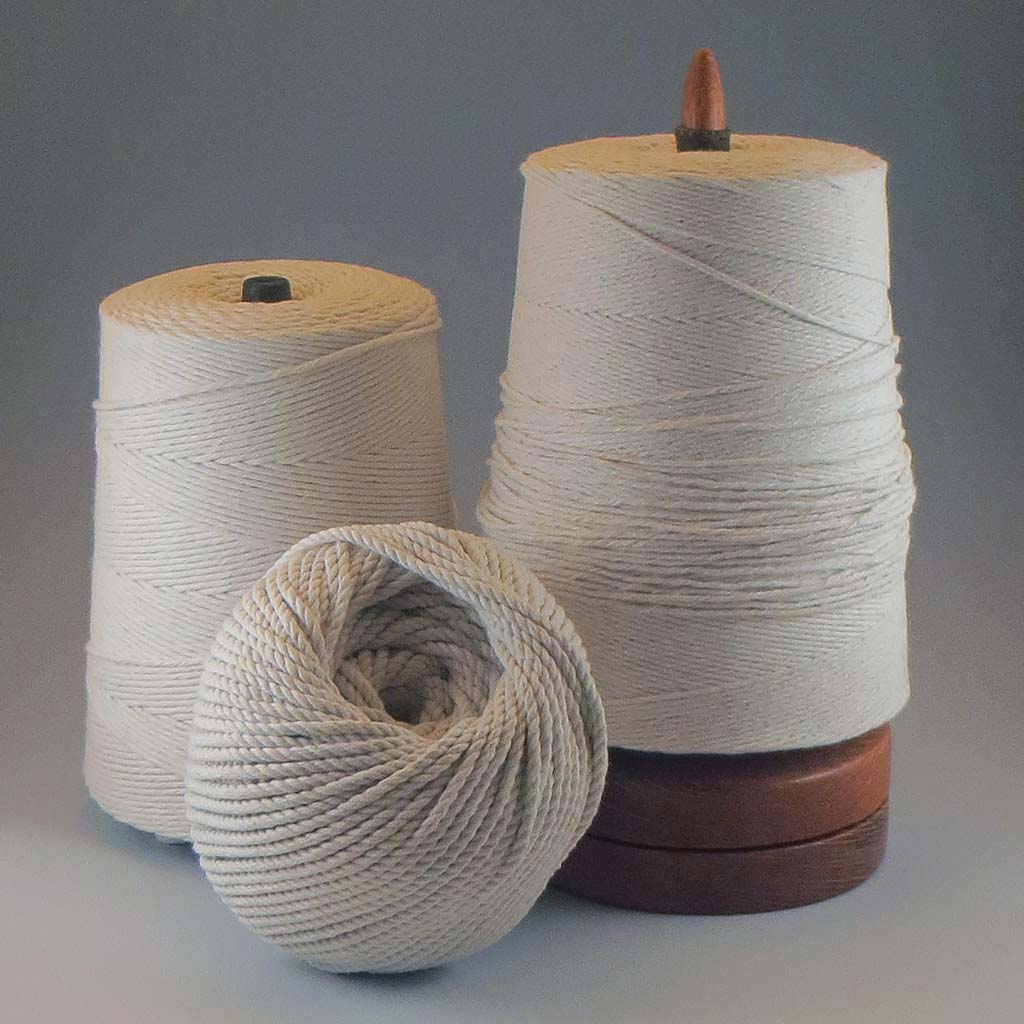
In December I normally I do a darling little ceremonial studio celebration and write about it here. This year the very idea was revolting to me and, even though I desultorially assembled some items – flowers, candles, music – for the intended affair, I just kept working instead. Since last spring, when I learned about the wisdom of the vagus nerve, I have attempted to listen to it first and it wasn’t having no dang ceremony! It wanted the concrete, the material, the tactile and real…and it wanted it NOW! It also inkled at the continued writing of this whole Studio Journal thing, which I will understand better as I proceed to write about the very tactile and real kitchen twine, and I will attempt to explain what I learned-by-doing at the end.
Ten Important Considerations about Knitting with Kitchen Twine
- I Ching trigram 62: the preponderance of the small guides me. For one thing, it means measuring precisely at the foundation!
- Knitting is an intimate act and the feel of the materials, both fiber and tools, is crucial to the success and replication of the endeavor.
- The chunkier the twine and ply, the bigger the needles or hook is only a general guide. Use any damn size of either together and see what happens.
- If your hands start to feel achy, itchy, burning or crusty, take ameliorating action pronto.
- No plastic/acrylic anything! Soft-ish cotton works best, but continue to try stuff.
- Since it’s getting burnt up, find the cheapest twine that will walk in beauty with you.
- The need is for the finished handiwork to absorb the liquid porcelain thirstily and also have enough structural integrity to not collapse in the heatwork of the kiln. Seek the right combination of material, stitch pattern, sculptural design and assembly. That might take the rest of your creative life.
- Just like the soft glow of leatherhard clay, the just-knitted and sewn-up works of raw twine alone are delightful.
- Keep talking to the twine, asking what it wants to be and what it’s capable of. Test everything.
- When the piece transforms into hard ceramic, make sure any additional decorative decisions continue to honor the twine’s essential part.
-Liz Crain, who has learned by writing this entry that she’s now aiming her Studio Journal at the short and sweet. At entries that don’t take a week for her to write and edit. At writing being as enjoyable as a daysail in a rented doublehander dinghy on a county park reservoir instead of a frightening month-long slog in a trimaran caught in both high seas and doldrums off the coast of Venezuela.
Addenda: In addition to lovely wool yarns and experiments with hemp, jute, wire, ribbon, and different kinds of twine, in the past year I have knit at least six 2.5# spools of 10-ply cotton twine in making my knitted porcelain pieces. I added it up: that’s 28,500 feet, or 9500 yards, or 95 football fields, or almost 5.5 miles. I know from twine!
Ms Crain. Astounding numbers those are. Have u ever knitted with needles where one is bigger than the other? Sounds wonky which is of course my fave. Alas the technical aspects would prove problematic I fear. I did try knitting wire. yeesh it was a pain!
I’m still trying All the Materials and All the Methods. Most have faults too big to enjoy and I go back to the twine. Am making my own shapes and “fabrics” but it is SO slow! Haven’t tried two different sized needles – oh joy! – but I DO so like wonky myself. Here’s to another creative year to us both!
May the New Year bring you more enjoyable practice into your masterful creativity. It is always such a delight to hear your reports and witness your unique take on life’s twists and turns. Blessings to you!
Blessings circling ’round! For us all. Thank you.